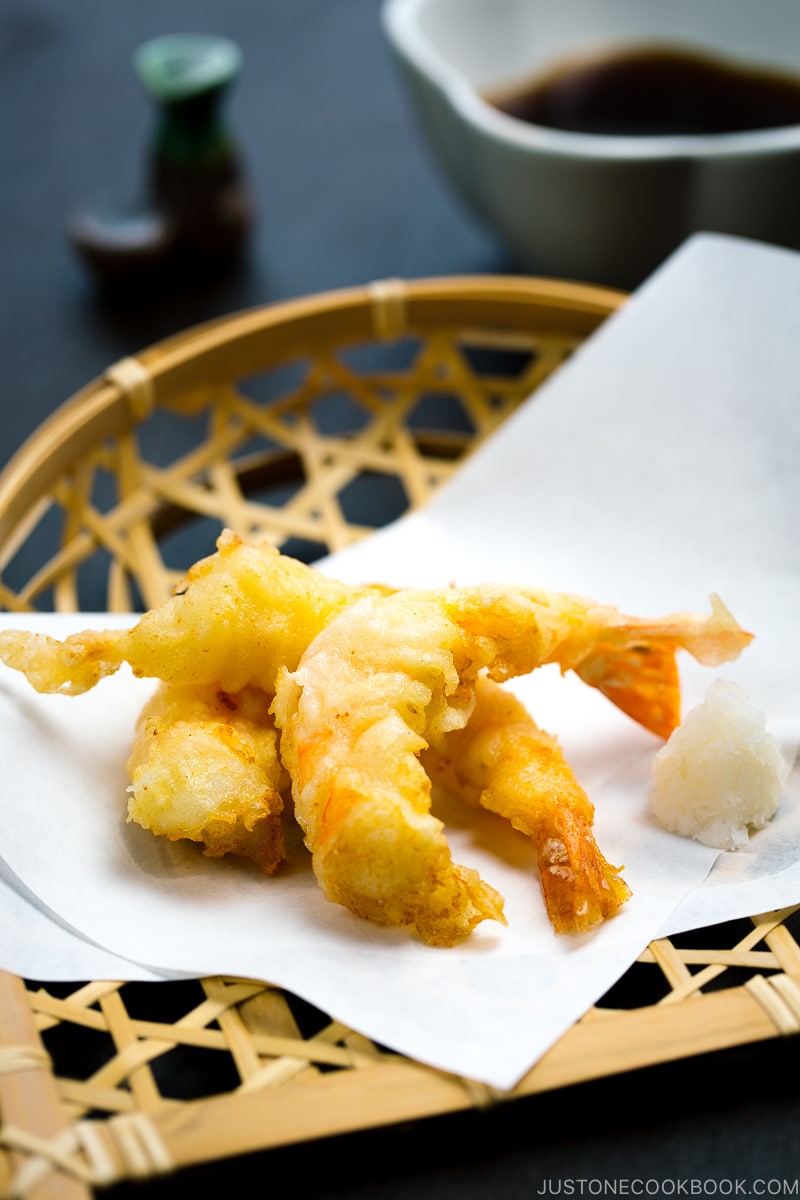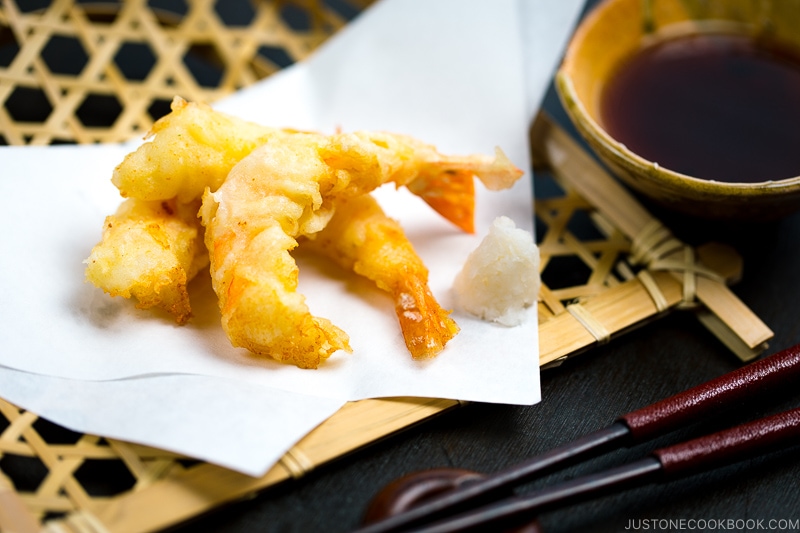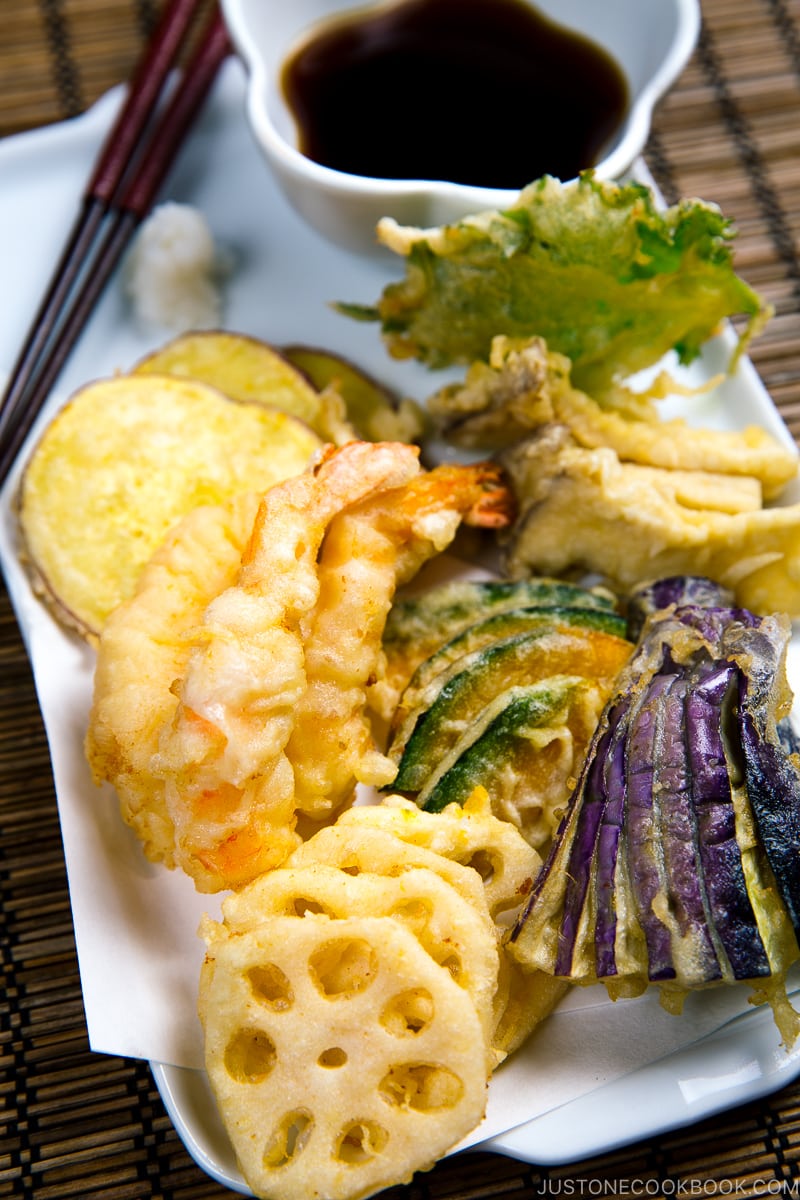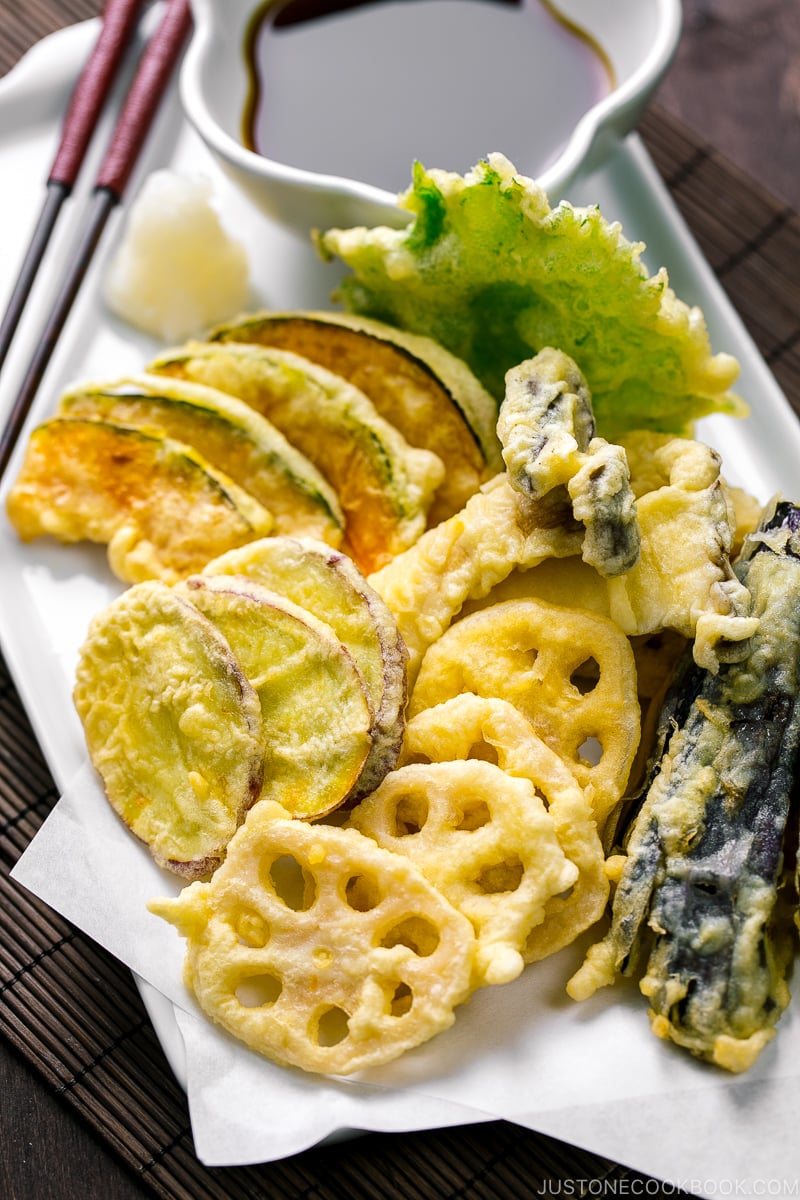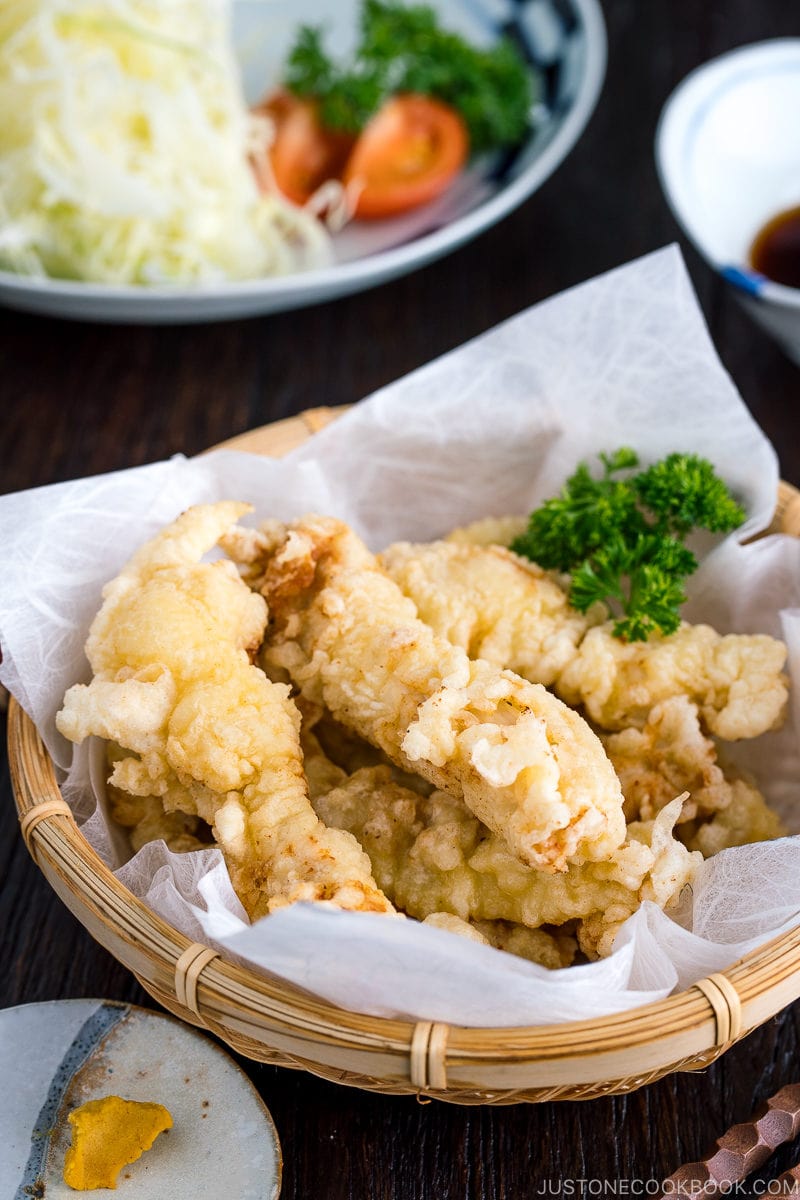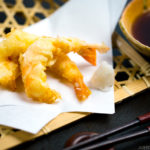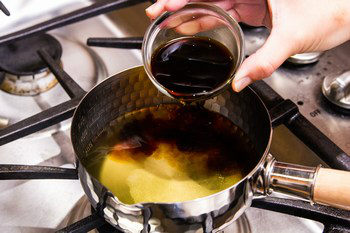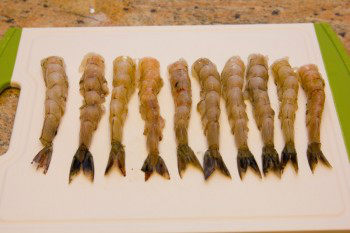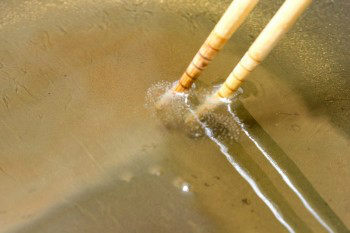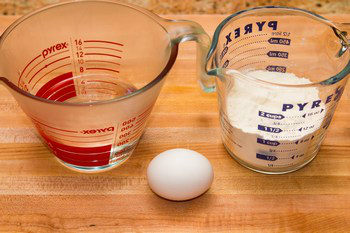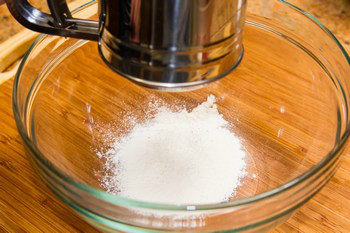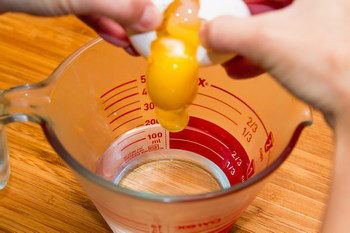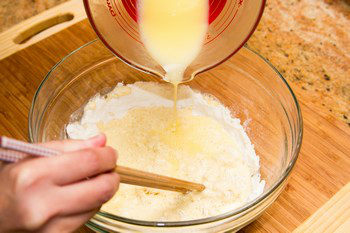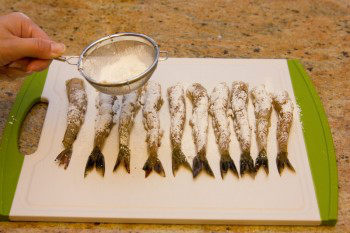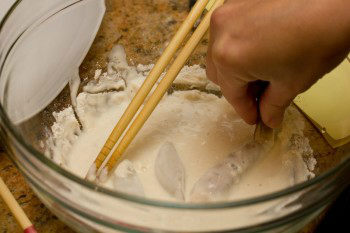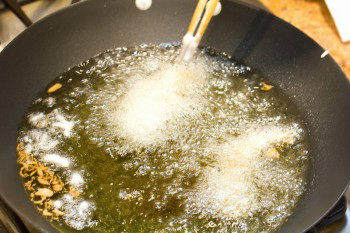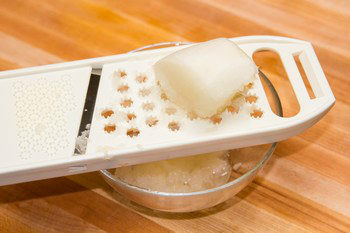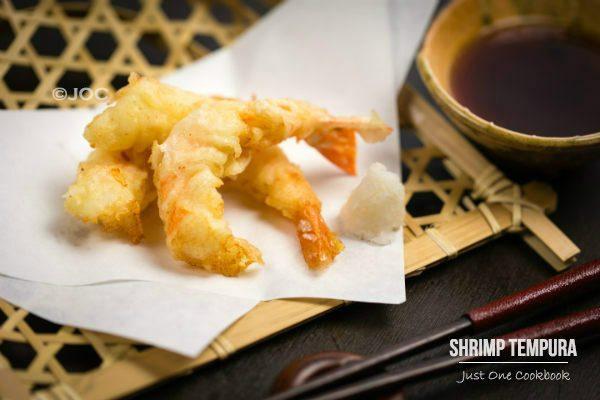Tempura is one of the most popular and well-known Japanese dishes around the world! Besides using vegetables, we often use seafood as a main ingredient. Among seafood, shrimp is definitely the most popular. You probably see shrimp tempura at your local Japanese restaurants. In Japan, we call it ebi no tempura (海老の天ぷら) or ebiten (えび天). Ebi means shrimp and ten comes from tempura. Besides being a standalone main dish, crispy shrimp tempura is served over a rice bowl like Tendon or noodle soup like Tempura Soba and Nabeyaki Udon.
What is Shrimp Tempura?
Shrimp tempura are large, plump shrimp dipped in batter and deep-fried to a light and crisp-crunchy texture. It’s served with tempura dipping sauce called Tentsuyu on the side. The right deep-frying technique and a light, ice-cold batter are the secrets to an airy coating that doesn’t absorb oil. It’s generally believed that Portuguese missionaries brought tempura-style batter to Japan in the 16th century during the Muromachi period (1333-1573). Tempura became popular in the early Edo period (1603–1868) as a street food among commoners. By the late Edo period and early Meiji period (1868–1912), tempura shops and restaurants began to establish this food as a specialty item in Japanese cuisine.
5 Tips To Make Shrimp Tempura
Here are some helpful tips on making tempura:
How Do We Keep the Shrimp Straight?
You may notice that the shrimp tempura you order at Japanese restaurants is very straight. How do you keep shrimp and prawns from curling up when frying? It’s easy to do with a Japanese method to devein, peel, cut slits in, and clean this shellfish. This extra prep time adds to the total time for this dish. However, it’s time well spent for a beautiful presentation. See my simple tutorial with step-by-step photos on How To Prepare Shrimp for Shrimp Tempura and Ebi Fry.
Hanaage Technique: Crispy Crumbs on Shrimp Tempura
Sometimes, when you order shrimp tempura at Japanese restaurants, crispy crumbs may coat the light golden brown tempura. Typically, you will see shrimp tempura with extra crispy batter on noodle soup dishes or tempura rice bowl dishes. We call this cooking method hanaage (花揚げ); hana means flower and age means deep-frying. Why flower? When the chef adds the tempura batter to the hot oil, it blooms like a flower. Check out the video below to see how it’s done:
Did you see the chef dip his hand in the oil? Crazy, isn’t it? If you go to tempura specialty restaurants in Japan, though, the tempura chefs will not serve excess batter on the tempura. That’s because they want you to taste the flavor of the shrimp, not only the batter. Most Japanese home cooks don’t make the hanaage-style tempura, either. It’s more time-consuming to fry and a bit difficult to make. Simply coating with batter and deep-frying shrimp is a lot easier.
Other Tempura Recipes You’ll Love
Vegetable Tempura – learn to fry different kinds of veggies Gluten-Free Tempura – everyone will enjoy this crispy tempura! Chicken Tempura – a regional dish from Oita prefecture Tenmusu (rice balls with shrimp tempura) – a popular Nagoya specialty Tentsuyu – make this dipping sauce with dashi, soy sauce, mirin, sugar, and daikon radish
Wish to learn more about Japanese cooking? Sign up for our free newsletter to receive cooking tips & recipe updates! And stay in touch with me on Facebook, Pinterest, YouTube, and Instagram. Editor’s Note: The post was originally published on July 6, 2011. The images and the recipe have been updated in November 2013.
